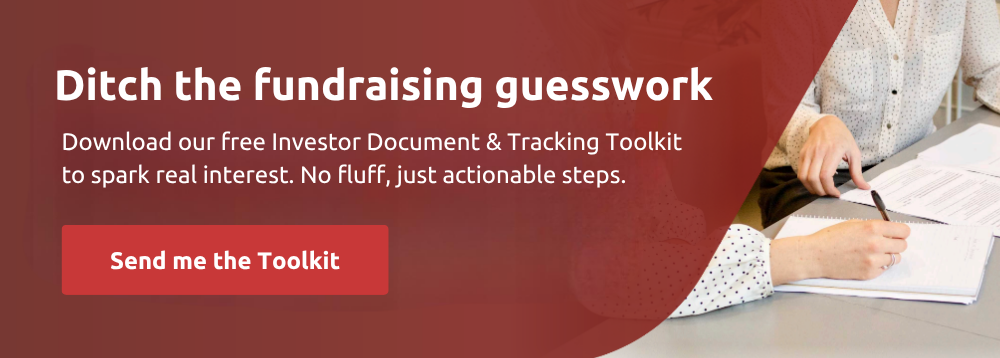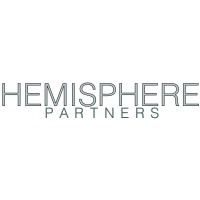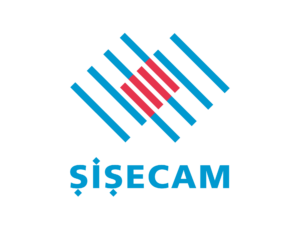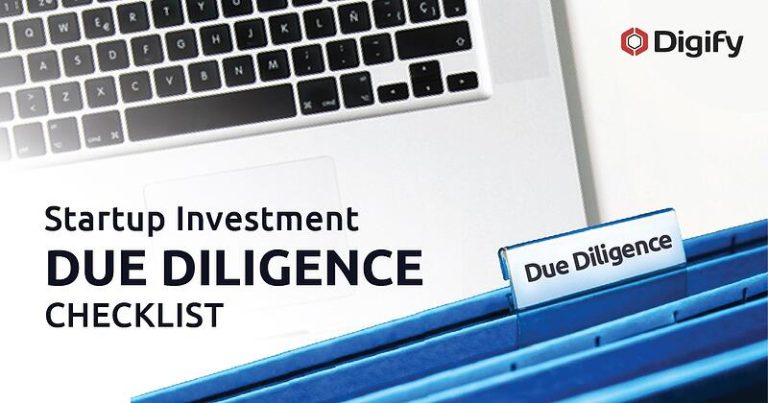This article is part of The Complete Guide to Raising Funds from LPs. The guide covers everything from defining your investment thesis and building strategic fundraising plans to mastering investor due diligence and navigating emerging trends like AI and ESG integration.
Each chapter builds on the previous ones to give you a complete fundraising playbook. While the article below is very informative, you’ll get the most value by reading the entire guide to see how you can fast-track your fundraising process.
Understanding the distinct priorities, decision-making processes, and expectations of different investor categories is fundamental to successful fundraising. Each investor type brings unique perspectives, requirements, and value beyond capital. This chapter provides a framework for tailoring your approach to maximize success with institutional investors, family offices, and high-net-worth individuals.
The Institutional Investor Landscape
Institutional investors—including pension funds, endowments, foundations, insurance companies, and sovereign wealth funds—represent the traditional backbone of private equity fundraising. A recent survey indicates that over 90% of institutional investors now hold both private equity and private credit, with 66% planning to increase their allocations to private assets over the next five years.
However, the institutional landscape has become increasingly challenging. The “denominator effect” from public market volatility has left many institutions over-allocated to private equity relative to their target allocations, constraining new commitments. Additionally, extended holding periods have created liquidity constraints, with distributions from existing investments failing to keep pace with capital calls.
Understanding Institutional Decision-Making
Institutional investment decisions typically involve multiple stakeholders and formal processes that can extend 6-12 months or longer. The investment staff, who serve as professional investors conducting initial screening and due diligence, make recommendations to investment committees. These individuals often specialize in specific asset classes or strategies and maintain deep networks within the private equity ecosystem.
Investment committees function as board-level groups that make final allocation decisions based on staff recommendations. Committee composition varies but typically includes board members, senior executives, and sometimes external advisors with relevant expertise. The dynamics within these committees significantly influence funding decisions, making it crucial to understand not just what they evaluate but how they reach consensus.
Many institutions, particularly smaller pension funds and endowments, rely on investment consultants to screen managers and provide recommendations. These consultants wield considerable influence, often serving as gatekeepers who determine which funds receive serious consideration from their institutional clients.
Risk and compliance teams have also become increasingly influential in the decision process. These groups ensure investments align with institutional policies, regulatory requirements, and risk parameters. Their approval has shifted from a formality to a critical component of the investment process, particularly following increased regulatory scrutiny of institutional investment practices.
Tailoring Your Approach to Institutional Requirements
Institutional investors evaluate private equity opportunities through several critical lenses that shape their decision-making.
- Strategic fit: This is the most important factor. Institutions maintain specific allocation targets and strategic priorities. Your fund must align with their current needs, whether filling gaps in their portfolio, accessing new markets, or achieving specific return objectives. Thoroughly research their existing portfolio to identify where your strategy adds value rather than just duplicating existing exposures.
- Operational excellence: This has evolved from a differentiator to a minimum requirement. Institutions expect institutional-quality operations including robust compliance programs, sophisticated reporting capabilities, established governance structures, and proven operational infrastructure. This reflects hard-learned lessons from past fund failures attributed more to operational breakdowns than investment losses.
- Track record verification: Going beyond headline returns, institutions conduct exhaustive analysis examining various aspects– attribution methodologies, performance persistence across cycles, team stability and individual contributions, and alignment between historical investments and stated strategy. They frequently engage third-party verification services to validate performance claims, making it essential to maintain scrupulous records and consistent calculation methodologies from your first investment forward.
- ESG considerations: Environmental, social, and governance considerations have moved from optional to mandatory for most institutions. Your approach must go beyond policy statements to demonstrate actual integration and measurement. This means you have to include specific examples of ESG considerations affecting investment decisions, portfolio company improvements, and quantifiable metrics tracking ESG performance over time.
- Fee and terms: Scrutiny on fees and terms continues intensifying as institutions seek to improve net returns. While Chapter 3 noted that private equity fees have remained relatively stable, institutions increasingly push for modifications including fee reductions for large commitments, enhanced governance rights and transparency provisions, and priority access to co-investment opportunities. Successful managers balance defending their economic model with strategic flexibility on terms that don’t fundamentally impact fund economics.
Understanding Family Offices
Family offices represent an increasingly important constituency in private equity fundraising. A recent report from Deloitte revealed that the number of single-family offices globally surged by 31% from 2019 to over 8,030 by early 2025. and private equity now accounting for approximately 30% of their portfolios. Unlike institutions, family offices operate with greater flexibility but also more idiosyncratic preferences that require careful navigation.
The family office universe encompasses remarkable diversity in structure, sophistication, and approach. Single family offices (SFOs) dedicated to managing one family’s wealth often reflect the investment philosophy and risk tolerance of the founding wealth creator. Decision-making can be rapid when aligned with family priorities but may involve emotional or legacy considerations alongside financial metrics. Understanding the family’s wealth creation story often provides crucial context for positioning your fund effectively.
Multi-family offices (MFOs) serving multiple families often operate more like institutional investors with formal processes and professional investment teams. However, they typically maintain more flexibility than traditional institutions and can move more quickly when opportunities align with their mandate. The challenge lies in satisfying multiple families’ objectives while maintaining operational efficiency.
Many family offices combine direct investing with fund commitments, creating hybrid structures that blur traditional LP-GP boundaries. These offices seek not just returns but active involvement, viewing fund investments as platforms for learning and deal flow access. This creates opportunities for strategic partnerships beyond simple LP commitments but requires careful boundary management to maintain fund integrity.
The heterogeneity of family offices demands careful qualification and customization of your approach. What resonates with a technology entrepreneur’s family office may be entirely inappropriate for a multi-generational industrial family. Understanding these nuances early in the engagement process saves time and increases success probability.
Building Relationships with Family Offices
Family office engagement often requires a more personal, relationship-driven approach than institutional fundraising, reflecting their unique structure and objectives. Philosophical alignment emerges as a critical factor; family offices often seek managers whose investment philosophy aligns with their values and long-term objectives. This extends beyond returns to include impact considerations, legacy building, and ethical alignment. For example, a 2025 PwC study noted that 54% of US family offices are now engaged in impact investing, doubling participation since 2015, with strong preferences for sectors like healthcare, education, and renewable energy.
Taking time to understand and authentically connect with family values pays dividends in building lasting relationships. Family offices prefer direct access to fund leadership rather than working through investor relations teams. This preference reflects both a desire for deeper understanding and the relationship-oriented nature of family wealth management. Successful managers balance providing meaningful principal access with maintaining operational efficiency.
Meanwhile, flexibility and customization requests from family offices often exceed institutional norms. Common requests can take the form of enhanced co-investment rights, advisory roles leveraging family expertise, customized reporting addressing specific interests, and structural modifications accommodating family tax or estate planning needs. To be successful, you will need to develop frameworks for evaluating and accommodating these requests without creating excessive operational complexity or unfair advantages.
Many family office relationships are characterized by long-term orientation. While institutions think in allocation cycles, families often think in generations. This means long-term value creation, relationship continuity across fund cycles, and alignment with family legacy objectives will resonate more than short-term return maximization. This perspective shift can transform transactional fundraising into strategic partnerships.
Another way to strengthen family office relationships is through education and engagement beyond specific fund offerings. Many family offices appreciate market insights, educational content about private equity, and perspectives on broader economic trends. For instance, top-tier firms often host invitation-only roundtables or publish bespoke research on emerging technologies or generational wealth transfer strategies, adding value beyond just a fund pitch. Provide valued content to build relationships that extend beyond individual fundraising cycles. This will help position your firm as a trusted advisor rather than just another fund manager.
Regulatory Framework for HNWI Participation
While historically less prominent in private equity, HNWIs represent a growing capital source. Regulatory changes, technology platforms, and product innovation have increased HNWI access to private equity opportunities, creating new possibilities for fund managers willing to navigate the unique requirements of individual investors.
Understanding the regulatory framework governing HNWI participation is crucial for proper structuring and marketing. In the United States, accredited investor standards require individuals to meet specific income thresholds of $200,000 annually or $300,000 jointly with spouse, or net worth exceeding $1 million excluding primary residence. These standards vary globally, with some jurisdictions imposing higher thresholds or additional sophistication requirements, necessitating careful consideration for international fundraising.
Qualified purchaser requirements for funds relying on Section 3(c)(7) exemptions demand $5 million in investable assets, significantly limiting the HNWI pool but allowing unlimited numbers of such investors. This higher threshold often pushes emerging managers toward 3(c)(1) structures despite the 100-investor limitation, creating strategic trade-offs between investor capacity and minimum check sizes.
Marketing restrictions under Regulation D significantly impact HNWI fundraising approaches. Rule 506(b) prohibits general solicitation but allows up to 35 sophisticated non-accredited investors, while Rule 506(c) permits general solicitation but requires verification of accredited status for all investors. These choices fundamentally affect marketing strategy, operational processes, and the investor experience.
Unique Considerations for HNWI Investors
There are some unique concerns and preferences you will have to address when engaging HNWIs, which often differ markedly from institutional investors.
- Investment minimums: While institutions routinely commit $10-50 million or more, HNWIs typically invest $1-5 million. This creates operational considerations around investor servicing costs, fund governance complexity, and the optimal number of individual investors to accept.
- Tax sensitivity: For HNWI, this often exceeds institutional concerns given personal tax exposure. Complex individual tax situations require careful consideration of fund structure, state tax implications, and K-1 preparation timing and quality. Aim to provide tax-efficient structures and reliable, timely tax reporting. Many funds serving HNWIs invest in enhanced tax reporting capabilities or partner with specialized administrators experienced in individual investor needs.
- Liquidity expectations: Unlike institutions accustomed to 10+ year commitments, some HNWIs struggle with extended lock-up periods, particularly those new to private equity. Communicate clearly about liquidity constraints, capital call timing, and potential secondary market options. Some managers have experimented with tender offers or other liquidity mechanisms, though these add complexity and potentially impact returns.
- Communication preferences: HNWIs often expect more frequent updates, personalized communication, and accessible reporting formats. Digital portals providing real-time access to performance information, documents, and tax forms have become table stakes for funds serving individual investors. The challenge lies in delivering this enhanced service efficiently without dramatically increasing operational costs.
Segment-Specific Marketing Strategies
Each investor segment requires tailored marketing approaches that reflect their unique characteristics and decision-making processes.
Institutional marketing
Adopt a systematic, process-oriented approach that demonstrates institutional readiness at every touchpoint. You will need to be proactive about preparing due diligence materials anticipating institutional requirements. Make sure to include detailed operational due diligence questionnaires, track record documentation with multiple attribution scenarios, and thorough risk management frameworks addressing both investment and operational risks.
Professional marketing materials
Your marketing materials should emphasize process discipline and repeatability over personality or relationships. Case studies should demonstrate systematic application of your investment thesis rather than opportunistic success. Performance presentation must adhere to Global Investment Performance Standards (GIPS) or clearly explain any deviations. The overall message should convey that your success stems from repeatable processes rather than unreplicable circumstances.
Conference participation
Joining conferences and engaging with consultants helps build essential visibility within institutional networks. Be strategic with conference selection, prepare compelling presentation materials, and do systematic follow-ups with contacts to maximize return on conference investment. Similarly, proactive engagement with investment consultants, even before formal fundraising, builds crucial relationships that influence institutional access.
Family Office Engagement Strategies
Family office marketing requires a more nuanced approach balancing professionalism with personal connection. Relationship development through industry associations and family office networks provides more effective access than cold outreach. Organizations like the Family Office Exchange (FOX) or regional family office associations offer platforms for building authentic relationships over time.
Customize your presentations addressing specific family interests and values, as these tend to resonate more than generic institutional materials. For this, you will need to do research into family backgrounds, investment histories, and stated missions. A family office built on technology wealth may appreciate deep technical discussions, while multi-generational industrial wealth might focus on operational value creation. This customization extends beyond content to presentation style, with some families preferring formal presentations while others favor conversational discussions.
Another way to differentiate your approach is to emphasize partnership rather than simple capital provision. Many family offices seek intellectual engagement, access to deal flow, or opportunities to leverage their expertise. Position the relationship as mutually beneficial rather than one-directional to create stronger connections. For example, you could invite family members to speak at portfolio company events, seeking their expertise on relevant topics, or creating structured co-investment programs.
Flexibility in structure and terms accommodates unique family requirements while maintaining fund integrity. This doesn’t mean accepting any request but rather understanding the motivation behind requests and finding creative solutions. For example, a family concerned about liquidity might be satisfied with enhanced transfer rights rather than redemption provisions. One seeking involvement might appreciate an advisory role rather than governance rights. Success lies in understanding underlying needs and crafting mutually acceptable solutions.
HNWI Outreach Approaches
Marketing to HNWIs requires different channels and messages than institutional or family office outreach. Simplified materials explaining complex strategies in accessible terms help overcome the knowledge gap many individuals face when first exploring private equity. This doesn’t mean “dumbing down” content but rather focusing on clear communication, concrete examples, and educational context that builds understanding.
Digital marketing strategies, within regulatory constraints, can be effective in reaching qualified individuals. Content marketing through thought leadership articles, educational webinars, and social media presence builds awareness and credibility. However, all digital marketing must carefully comply with applicable securities regulations, particularly regarding general solicitation restrictions.
Partnerships with wealth advisors and private banks provide trusted intermediary channels to qualified investors. These relationships require systematic development including educational programs for advisors, streamlined onboarding processes accommodating their clients, and potentially revenue-sharing arrangements compliant with regulations. Success through advisor channels requires making their job easier while providing value to their clients.
Educational content demonstrating expertise without overwhelming detail helps build trust with individual investors. This might include market commentary accessible to non-specialists, educational series explaining private equity concepts, case studies illustrating your approach in practical terms, and regular updates maintaining engagement between fundraising cycles. The goal is positioning your firm as a trusted educator and advisor, not just another fund seeking capital.
Today’s fundraising environment demands sophisticated approaches tailored to distinct investor categories. While institutional investors remain crucial for scale, family offices and HNWIs provide important diversification and often bring strategic value beyond capital. Success requires understanding each segment’s unique characteristics, decision-making processes, and relationship dynamics.
The investment in developing segment-specific strategies and capabilities pays dividends not just in capital raised but in the quality and durability of investor relationships. Firms that excel at serving diverse investor types while maintaining operational excellence will enjoy significant fundraising advantages. The key lies not in choosing one segment over others but in building scalable processes that efficiently serve multiple segments without compromising the personalized attention each requires.









